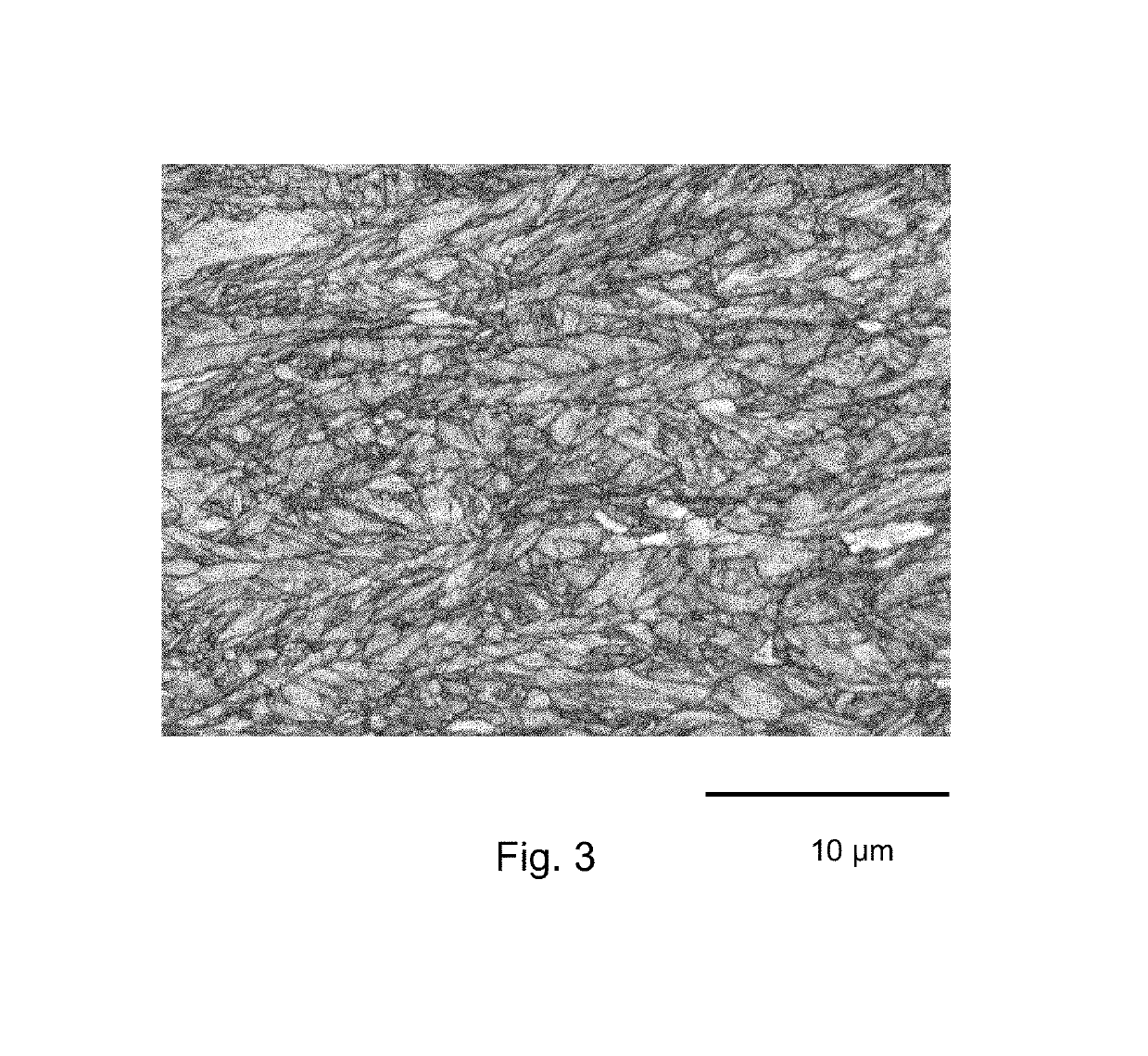Method for the production of very high strength martensitic steel and sheet or part thus obtained
a martensitic steel, high-performance technology, applied in the direction of furnaces, heat treatment furnaces, heat treatment equipment, etc., can solve the problems of high cost of alloy elements, precautions must be taken, etc., to improve weldability, reduce the carbon content of steel, and improve mechanical strength
- Summary
- Abstract
- Description
- Claims
- Application Information
AI Technical Summary
Benefits of technology
Problems solved by technology
Method used
Image
Examples
example 1
[0084]Semi-finished steel products are provided containing the elements listed below, expressed in percent (%) by weight:
[0085]
0.5Mn +SteelCMnSiCrMoAlSPNbTiBCr + 3MoA0.1951.9450.011.9090.050.030.0030.020.010.0120.00143.03B0.241.990.011.860.0080.0270.0030.020.008——2.88
[0086]Semi-finished products 31 mm thick were heated and held for 30 minutes at a temperature T1 of 1050° C., then subjected to a roughing rolling in 5 passes at a temperature T2 of 910° C. to a thickness of 6 mm, i.e. a cumulative reduction rate εa of 164%. At this stage, the structure is totally austenitic and completely recrystallized with an average grain size of 30 micrometers. The sheets thus obtained were then cooled at the rate of 25° C. / s to a temperature T3 of 550° C. at which they were rolled in 5 passes with a cumulative reduction rate εb of 60%, then cooled to ambient temperature at a rate of 80° C. / s to obtain a completely martensitic microstructure. For purposes of comparison, steel sheet having the compo...
example 2
[0097]Steel blanks with a thickness of 3 mm were obtained with the following composition, expressed in percent by weight (%):
[0098]
0.5Mn +SteelCMnSiCrMoAlSPNbCr + 3MoB0.241.990.011.860.0080.0270.0030.020.0082.88
[0099]The blanks were then subjected to a heating to 1000° C. (i.e. Ac3+210° C. approximately) for 5 minutes. They were then:[0100]either cooled to 50° C. / s to the temperature T3 of 525° C. then hot-stamped at this temperature with an equivalent deformation εc greater than 50%, and then cooled at a rate greater than the critical martensitic quenching rate (test B2)[0101]or cooled to 50° C. / s to the temperature of 525° C., then cooled at a rate greater than the critical martensitic quenching rate (test B3)
[0102]The following table presents the mechanical properties obtained:
[0103]
Test Temper- ature T3 (° C.) Re (MPa) Rm (MPa) 3220% C + 908 IΔRmI (MPa)Aver- age lath size (μm) lmax_lmin_ Inven-B25251531191216812990.93tionRefer-B3—132016521681291.85enceTes...
PUM
| Property | Measurement | Unit |
|---|---|---|
| austenitic grain size | aaaaa | aaaaa |
| temperature T3 | aaaaa | aaaaa |
| temperature T3 | aaaaa | aaaaa |
Abstract
Description
Claims
Application Information
 Login to View More
Login to View More - R&D
- Intellectual Property
- Life Sciences
- Materials
- Tech Scout
- Unparalleled Data Quality
- Higher Quality Content
- 60% Fewer Hallucinations
Browse by: Latest US Patents, China's latest patents, Technical Efficacy Thesaurus, Application Domain, Technology Topic, Popular Technical Reports.
© 2025 PatSnap. All rights reserved.Legal|Privacy policy|Modern Slavery Act Transparency Statement|Sitemap|About US| Contact US: help@patsnap.com


